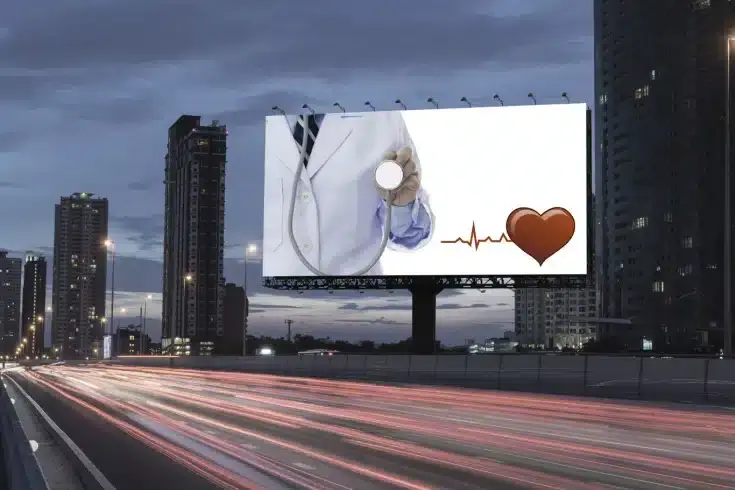Understanding Prohibited Advertising under Medical Advertising Regulations: Explaining No-Good Examples in the Guidelines

Advertisements promoting medical institutions such as hospitals and clinics are subject to regulations under the Japanese Medical Practitioners’ Act (医療法) and the Japanese Medical Advertising Guidelines (医療広告ガイドライン). In particular, the Medical Advertising Guidelines specify prohibited matters in detail, in addition to the explicit provisions of the Medical Practitioners’ Act. When posting medical advertisements, it is essential to check both of these sources.
However, many may find it challenging to understand what types of advertisements are illegal, even after reading the guidelines provided by the Ministry of Health, Labour and Welfare (厚生労働省).
In this article, based on the case study book from the Ministry of Health, Labour and Welfare, we will introduce an overview of the regulations concerning medical advertising and specific examples of what constitutes illegal advertising. We will provide a detailed explanation of the prohibited matters set out in the guidelines and the points to be mindful of when placing advertisements, so please use this as a reference.
What is Medical Advertising Regulation?
Medical advertising refers to advertisements related to medical practices, hospitals, and clinics. Medical advertising is regulated by the Japanese Medical Practitioners’ Act (医療法) and other relevant provisions.
Here, we will explain an overview of the regulations on medical advertising.
- The purpose of medical advertising regulations
- Applicability and targets of medical advertising regulations
- Prohibited matters as stipulated in medical advertising regulations
- What can be advertised
If you are unsure about what the medical advertising regulation system entails, please use this as a reference.
The Purpose of Medical Advertising Regulations

Medical advertising is principally prohibited for the following reasons:
- Since medical services are related to human life and health, the consequences of being misled by inappropriate advertising can be significantly more severe compared to other fields.
- Given the high level of specialization in medical services, it is difficult for consumers to assess the quality of services offered based on advertising alone.
In light of the unique nature of medical services, regulations on medical advertising have been established to protect patients and other users.
These regulations define what is prohibited in advertising and what is permissible, ensuring that users are provided with accurate information and can make informed choices about appropriate medical treatments and services.
Reference: Japanese Ministry of Health, Labour and Welfare | Guidelines on Advertising for Medical or Dental Practices, Hospitals, or Clinics (Japanese Medical Advertising Guidelines)
Applicability and Regulation of Medical Advertising
Advertisements that fall under the regulation of medical advertising must meet the following criteria:
- Advertisements intended to attract patients or encourage visits (Inducement)
- Advertisements that allow for the identification of the individual or entity providing medical services, or the name of the hospital or clinic (Identifiability)
All advertisements targeting Japan that meet the criteria of medical advertising are subject to these regulations.
Not only advertisements conducted by medical institutions themselves but also those published by mass media, affiliates, and others regardless of their title, are subject to regulation.
What Constitutes Permissible Advertising Content
The content that is allowed to be included in medical advertising is restricted by the provisions of Article 6, Paragraph 5, Subparagraph 3 of the Japanese Medical Practitioners’ Act (医療法). In other words, it is prohibited to advertise information that is not listed as permissible advertising content under the Medical Practitioners’ Act.
Examples of permissible advertising content listed in each item of Article 6, Paragraph 5, Subparagraph 3 of the Medical Practitioners’ Act include the following:
- Indicating that one is a physician or a dentist
- The name of the medical department
- The name of the hospital or clinic, telephone number, location, and the name of the administrator
- Consultation days and hours, and the availability of consultation by appointment
- The content of medical services provided (limited to those specified by the Minister of Health, Labour and Welfare)
The information provided must be useful for patients and others in making medical choices. Additionally, the content regarding medical services must be subject to objective evaluation and verifiable after the fact.
Criteria for Lifting Restrictions on Advertisable Matters
According to the regulations set by the Ministry of Health, Labour and Welfare, there are cases where matters not applicable as advertisable can still be advertised. This is based on the notion that there is a need for smooth and appropriate provision of information that patients and others actively seek out for themselves.
There are certain criteria that must be met for the restrictions on advertisable matters to be lifted, such as the following:
Medical Care Act Enforcement Regulations Article 1-9-2
Medical Care Act Enforcement Regulations | e-Gov Law Search[ja]
1. The advertisement must be on a website or similar platform that displays information sought by patients or others, which contributes to making appropriate medical choices.
If all the criteria for lifting restrictions are met, in principle, any type of advertisement can be published. Examples of violations and points to note regarding advertisable matters are explained in detail in the following article.
For a detailed explanation of the key points and criteria for medical advertising regulations, please refer to the following article.
Related article: Attorneys Explain the Key Points of Medical Advertising Guidelines in an Understandable Way[ja]
Prohibited Matters Defined in the Medical Advertising Guidelines

In addition to regulations under the Japanese Medical Care Act and the Enforcement Regulations of the Medical Care Act, there are prohibitions set forth in the Medical Advertising Guidelines. These include:
- Advertisements that compromise dignity
- Advertisements prohibited by other laws or related advertising guidelines
It is particularly important to note that the prohibition of “advertisements that compromise dignity” is not stipulated by law but is only mentioned in the Medical Advertising Guidelines, thus requiring careful review.
Medical advertisements must strive to convey objective and accurate information so that patients and others can make appropriate choices regarding treatment methods. The guidelines dictate that advertisements likely to compromise dignity are not suitable for medical advertising and should be avoided.
We will explain what the guidelines mean by “content that compromises dignity” by introducing actual examples.
Examples of Dignity-Damaging Medical Advertisements
We will introduce two examples of medical advertisements that are prohibited by the Medical Advertising Guidelines for compromising dignity.
- Inducements unrelated to the medical services provided
- Advertisements emphasizing cost
Let’s take a closer look at each.
Inducements Unrelated to the Medical Services Provided
Emphasizing information that is not directly related to the medical services provided can compromise the dignity of the advertisement and is therefore not suitable for medical advertising. It can mislead patients and others in choosing treatment methods or medical institutions, leading to unjust inducement.
Specific examples include:
- Giving away gachapon toys to children who have worked hard at their treatment
- Presenting baby goods to those who give birth at our clinic
The gift of goods is entirely unrelated to the medical services provided. Even if such services are offered, they should not be mentioned in medical advertisements.
Advertisements Emphasizing Cost
When posting medical advertisements, you must not emphasize the cost.
If the information about costs is emphasized, it can significantly hinder patients from making appropriate choices regarding treatment methods or selecting medical institutions.
Advertisements that highlight discounts or campaigns, such as the following, are considered to compromise dignity:
- Regular price 50,000 yen / 1 month → Discounted price 45,000 yen
- 30% off various treatments when you register as a member through our clinic’s exclusive app
Even if there are price adjustments or discounted prices, the content related to costs should not be overly emphasized.
Furthermore, it is prohibited to emphasize special pricing for receiving treatment as a case monitor. Inducing patients by stating, “Cooperating as a monitor will reduce the cost from the regular price,” is not appropriate for medical advertising.
However, information about costs is one of the useful pieces of information for patients. As long as it is not overly emphasized, there is no problem in using bold or underlined text to indicate cost information.
Key Considerations for Medical Advertising

When publishing medical advertisements, there are three important points to keep in mind to ensure compliance with medical advertising regulations.
- Trade names of pharmaceuticals
- Banner and listing advertisements
- Advertisements accessible only to specific individuals
We will explain these points using specific examples, so please use them as a reference.
Trade Names of Pharmaceuticals
Medical advertisements aimed at the general public should not include the trade names of pharmaceuticals or medical devices.
This is based on the “Standards for Proper Advertising of Pharmaceuticals, etc.” attached to the notification No. 0929-4 issued by the Director-General of the Pharmaceutical and Food Safety Bureau of the Ministry of Health, Labour and Welfare on September 29, 2017 (Heisei 29) (2017). According to these standards, advertisements targeting the general public, who are not medical professionals, are prohibited.
When including information about pharmaceuticals in advertisements, such as for prescription drugs, you must use the generic name of the drug, not the specific trade name. Examples of permissible statements in advertisements include:
- Our clinic uses generic pharmaceuticals.
- We offer treatment drugs for AGA (Androgenetic Alopecia).
In publishing medical advertisements, it is necessary to comply not only with the provisions of the Medical Care Act and its enforcement regulations but also with other laws and related guidelines.
- Pharmaceutical and Medical Device Act (Japanese)
- Health Promotion Act (Japanese)
- Act against Unjustifiable Premiums and Misleading Representations (Japanese)
- Act on the Prevention of Unfair Competition (Japanese)
It is particularly important to check the regulations related to medical advertising in such laws.
Banner and Listing Advertisements
Banner and listing advertisements that appear when searching may be subject to medical advertising regulations. If they meet the criteria for inducement and specificity and fall under medical advertising, including prohibited content in banner or listing advertisements can be illegal.
Furthermore, since they do not meet the criteria for lifting restrictions on what can be advertised, content that is not permissible for advertising cannot be advertised.
Banner and listing advertisements appear automatically during searches and are not “information that patients or others have actively sought out,” so they do not meet the criteria for lifting restrictions. It is important to be aware of this.
However, it is not prohibited to place medical advertisements in banner or listing advertisements per se. Advertising within the scope of permissible content is allowed.
Advertisements Accessible Only to Specific Individuals
Advertisements that are only accessible to specific individuals are also subject to medical advertising regulations. This is because all advertisements that meet the criteria for inducement and specificity and qualify as medical advertising are regulated.
Many medical institutions adopt a system where information is only viewable on a members-only page after registering on a My Page. Even if the page is only viewable by members, it is not permissible to post advertisements that emphasize costs or other prohibited content.
However, since the medium displays information that patients or others have actively sought out, it is possible to include content beyond what is permissible for advertising if the criteria for lifting restrictions are met.
Conclusion: Expert Knowledge is Essential for Handling Medical Advertising
Medical advertising is strictly regulated with prohibitions in place to protect patients and other consumers. This is because the potential harm caused by unfair advertising in the field of healthcare, which deals with human life and health, is significantly greater compared to other sectors.
Advertisements that compromise dignity or contain inappropriate content can mislead patients and others in their choice of treatment methods or healthcare facilities, potentially leading to unjust solicitation. Expressions that may hinder the proper choice of patients are deemed inappropriate for medical advertising.
The content included in medical advertisements must be thoroughly scrutinized to ensure compliance with medical advertising regulations. To avoid unexpected troubles due to oversight or assumptions, it is advisable to consult with specialists when publishing medical advertisements.
Guidance on Measures by Our Firm
Monolith Law Office is a law firm with extensive experience in both IT, particularly the internet, and legal matters. We provide services such as legal checks for articles and landing pages (LPs), guideline creation, and sampling checks for clients including media operators, review site operators, advertising agencies, and direct-to-consumer (D2C) businesses such as supplement and cosmetic manufacturers, clinics, and ASP service providers. Details are provided in the article below.
Areas of practice at Monolith Law Office: Legal Checks for Articles & LPs, Including Compliance with the Japanese Pharmaceutical and Medical Device Act[ja]
Category: General Corporate





















